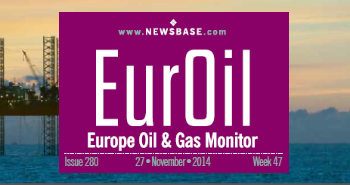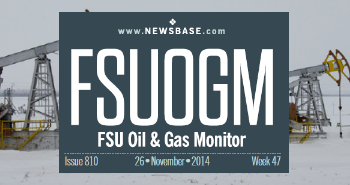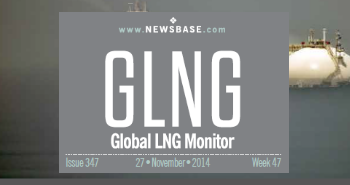Gazprom reportedly withholds gas supplies to drive up European prices
.png)
ED: this article is from bne IntelliNews' sister publication NewsBase.com that covers global energy issues.
What: Gazprom is intentionally withholding gas supplies to drive up prices in Europe, according to the FT. But not everyone agrees.
Why: The strategy makes commercial sense, although some industry participants have suggested that Gazprom is putting pressure on the EU to let Nord Stream 2 go ahead. However, others note that Ukraine has been limiting Russian transit capacity.
What next: While the Biden administration appears to have eased its position on Nord Stream 2, multiple obstacles could yet derail the controversial pipeline project.
Russia’s Gazprom is exacerbating shortages on the European natural gas market by withholding extra supplies, the Financial Times reported on June 24.
Europe’s gas market has grown unusually bullish in recent months, with spot prices recently surging to $360 per 1,000 cubic metres, which is unusually high, especially for summer, when there is little need for heating. In fact, the recent heatwave has driven up electricity demand for cooling purposes. Prices were already unusually high at the end of winter, after several months of cold temperatures and restricted LNG supply. They are now at their highest point since 2008, weighing down on the post-coronavirus (COVID-19) economic recovery.
But while Gazprom has plenty of spare production capacity to meet soaring demand in Europe, its pipeline exports to the continent have instead dropped by roughly one fifth in 2021 versus the pre-pandemic level, according to the FT. Gazprom is abiding by its contractual obligations, energy executives and analysts told the newspaper, but it is reluctant to increase volumes further through spot market sales. The company could simply be acting out of business sense. Why send more gas if doing so will push prices down and result in fewer earnings?
“Gazprom is just trying to maximise its profits at a time when spot prices are high, gas storage is empty and LNG demand in Asia is strong,” one executive at a German energy company told the FT. They’re just being opportunistic.”
Gazprom has denied having such an agenda, issuing a statement saying it “supplies gas precisely in line with consumers’ requests.”
“It is based on those very requests as well as the possibilities for portfolio capacity optimisation that the company books transportation capacity in particular directions,” Gazprom said.
This marks a key shift in strategy for the Russian giant, which has traditionally focused in expanding its market share at all costs rather than maximising revenues. Its new policy mirrors that of Russia and its OPEC+ partners, who have reined in oil supply over the past year to push up prices.
Naturally, Gazprom alone is not responsible for the bullish conditions that have appeared on the European gas market. Besides the cold winter and hot summer, demand has been bolstered by the rising cost of EU carbon allowances, which have grown to €50 ($60) per tonne, encouraging utilities to switch from coal to cleaner gas-burning power generation.
The gas market is also tight in Asia, where LNG spot prices are traditionally at a premium to those found elsewhere. This has encouraged LNG exporters to divert more shipments away from Europe and towards Asia.
The spike in gas prices is obviously bad news for European economies, undermining the post-pandemic recovery. And the shortages may also jeopardise energy security during the next winter.
Gas prices are typically higher in winter and lower in summer, giving companies an incentive to store more volumes during the hotter months of the year. But this year is anything but typical, owing to the continuing impact of the coronavirus. With companies having no reason to withhold gas from the market and place it in storage, European storage utilisation is at an unusually low level.
Worst still, prices could climb further in the coming months as Gazprom closes some of its export pipelines for scheduled maintenance in June and July. TurkStream is already offline for repairs, and will not return to operation until June 29. Meanwhile, Nord Stream 1 is due to halt shipments between July 13 and 25.
Enter Nord Stream 2
Other industry players suggested that Gazprom might be inflating gas prices to put pressure on EU governments to give its controversial Nord Stream 2 pipeline the greenlight. The embattled project is nearing its finish, with Russian President Vladimir Putin recently having hailed the completion of pipelaying at the first of its two strings.
“Gazprom is effectively saying to the EU: ‘give us the green light for Nord Stream 2 and we will send you all the gas you need’,” Tom Marzec-Manser, lead European gas analyst at ICIS, told the FT. “‘Don’t, and we won’t. We’re not going to send the extra gas via Ukraine and you’ve seen what that means for wholesale prices in a tight global [LNG] market.’”
Nord Stream 2 has been beset by financial and legal problems since its conception six years ago. It was originally due to start pumping gas at the end of 2019, but permitting delays in Denmark and US sanctions have held the project up.
Nord Stream 2’s prospects have brightened recently, however. The US Biden administration in May waived additional sanctions against the pipeline, a move widely perceived as a tacit admission that the US can do little to thwart the project. Germany, an ardent supporter of Nord Stream 2, is set to approve its launch later this year. It is expected that Biden will at some point ease the existing sanctions against Nord Stream 2, possibly after trilateral talks with Moscow and Berlin.
High gas prices and low storage levels strengthen the case for EU authorities to permit the project. However, if the pipeline really is the motive for Gazprom withholding supply, the company risks convincing the EU that the threat that Russia poses to energy security is far too great, giving the bloc a rational to restrict the pipeline.
Explanation in Ukraine
Still, not all experts are convinced that the blame for the price spike lies with Russia. Laurent Ruseckas, energy analyst at IHS Markit, argues instead that Ukraine has been limiting how much transit capacity it makes available to Gazprom.
"Because this is Gazprom, everyone tends to read sinister or at least hardball tactical motives into this," Ruseckas said in a thread on Twitter. "But I think on big piece of the picture is being ignored – the terms on which Ukraine is offering additional capacity to Gazprom."
Under its current transit contract with Ukraine, Gazprom is paying to send 110mn cubic metres per day of gas via the country this year, although the Ukrainian gas system could handle almost three times this amount. Ukrainian gas grid operator GTSOU offered 41.6 mcm per day of additional firm transit capacity in January, but in February it offered only 15 mcm per day. Yet Ruseckas noted that there were no indictions that GTSOU had reduced the physical capacity of its system, whether because of maintenance or other operational reasons.
"We should acknowledge that the limited capacity available for Gazprom in February-April may have constrained Gazprom from shipping additional gas into the EU, which could have eased the low storage levels we see today, and thus prices, a bit," he said.
Then in May, GTSOU again offered 15 mcm per day of firm capacity but a further 64 mcm per day in interruptible capacity, the analyst explained. Interruptible capacity is usually offered when a pipeline operator cannot guarantee capacity is available, and therefore it is sold at a discount. But GTSOU is instead charging Gazprom the same rate as for firm capacity on the Russian border, according to Ruseckas.
"An inferior product at a premium price! And without any operational basis I can see for doing so," the analyst said, adding that Gazprom might not trust GTSOU not to disrupt the capacity "for non-operational or tactical reasons."
"I am not surprised that Gazprom is reluctant to auction gas to EU buyers - creating a contractual obligation to deliver gas – based on the use of interruptible capacity in Ukraine 22/24," he said.
Remaining obstacles
While the US softening its stance is a welcome development for Gazprom, Nord Stream 2 is not out of the woods yet. The pipeline still faces a number of obstacles, one of which is EU regulation.
Changes to the EU’s Gas Directive in 2019 apply the bloc’s energy liberalisation rules, including those on unbundling and third-party access, to pipelines to and from non-EU countries. This could mean Gazprom would to have to divest Nord Stream 2 and possibly allow other suppliers to use its 55bn cubic metre capacity.
Divesting the pipeline is not such a hurdle. But as the pipeline runs from Russia directly to Germany, Gazprom’s only choice to comply with third-party access rules would be to allow competing Russian companies to use it. Under Russian law, only Gazprom is allowed to use the country’s gas export pipelines, and Moscow is reluctant to end this monopoly through fear of creating competition between Russian gas suppliers overseas, weakening its revenues.
Nord Stream 2 is fighting the amendments to the gas directive in court, but so far without success. German regulator Bundesnetzagentur confirmed on June 24 that Nord Stream had requested certification as an independent transmission system operator (TSO). But unless it manages to overturn the EU amendments, this request will be denied.
Gazprom could try to get around the third-party access issue by holding auctions for Nord Stream 2’s capacity in Russia, while creating auction conditions that in reality make it impossible for any other companies to book space. But the EU could argue that this practice does not follow the spirit of the law even if it follows the letter of the law.
Another risk is that the US does not lift its sanctions. The existing ones could make it difficult for Nord Stream 2 to obtain technical certification to start operating. Norway-based quality assurance firm DNV had been due to certify the pipeline but pulled out in early January citing sanctions.
Even if Biden’s administration decides to lift the sanctions, such a decision could be challenged in either the House or the Senate. There is bipartisan opposition to Nord Stream 2 among US lawmakers.
A third possibility is that Germany drops its support for Nord Stream 2, which would surely seal its fate. German Chancellor Angela Merkel’s support for the project has held firm despite multiple crises in Russian-EU relations in recent years, including the poisoning of Russian dissident Alexei Navalny last August. However, Germans will vote in late September for a new federal parliament, and the Greens, which oppose Nord Stream 2 on environmental grounds, are expected by most pollsters to get the highest number of seats after Merkel’s own CDU/CSU alliance.




Follow us online